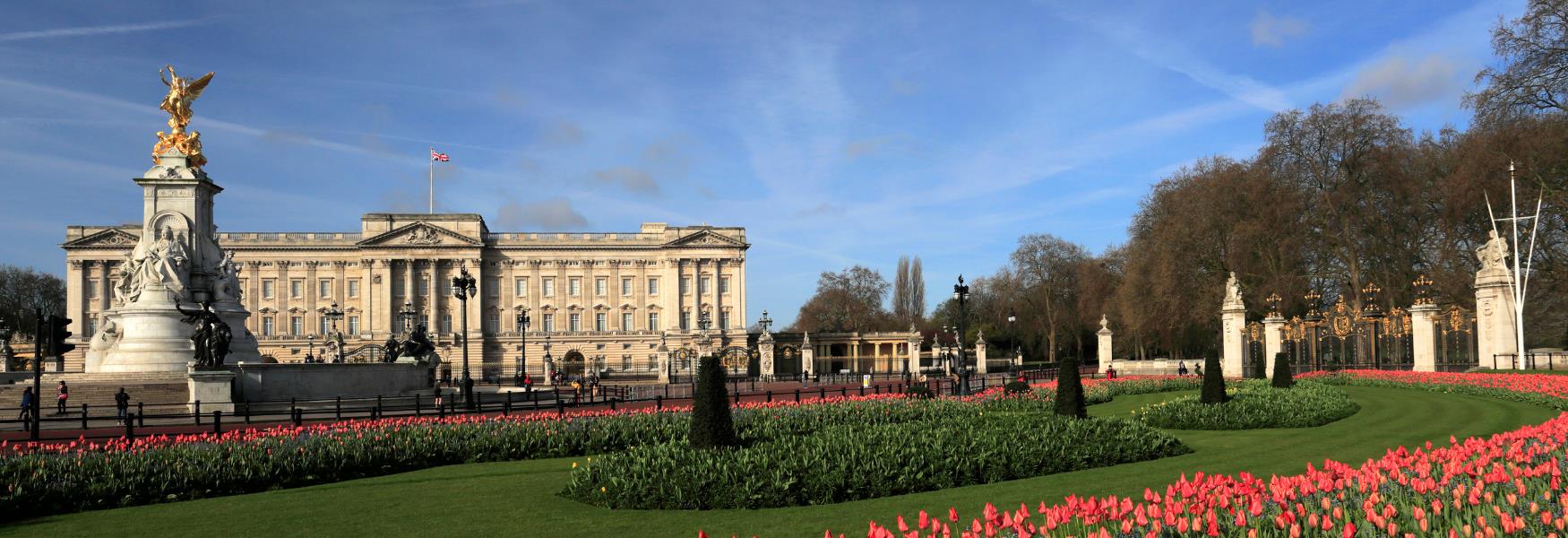To build your own Itinerary, click  to add an item to your Itinerary basket.
to add an item to your Itinerary basket.
Already saved an Itinerary?



You are here: UK History > Royal History > House of Tudor > Henry VIII | The king with 6 wives > Catherine of Aragon
Catherine of Aragon was the first wife of Henry VIII.
She first came to England as a Spanish princess, who was initially betrothed to Henry’s brother, Arthur. Out of all six of Henry's wives, their marriage was the longest, lasting over twenty years. Like many of the other wives of the king, Catherine suffered several miscarriages and still births, her only surviving child went on to become Mary I.
Catherine of Aragon was known as Catherine, Katherine, Katherina, Kateryn and Katerine – there is some debate over the spelling her name, but Catherine is the most commonly used. It should also be noted that though the common rhyme about Henry’s wives claims that they were divorced, a more accurate assessment would be that their marriage was annulled on the grounds that she had previously been married to Henry's brother.
Born: 16th December 1485, Archiepiscopal Palace, Castille, Spain
Died: 7th January 1536 (aged 50), Kimbolton Castle Huntingdonshire, England
Queen: 11th June 1509 – 23rd May 1533
Married: 1st - 1501-1502 | 2nd -1509 - 1533
Spouses: Arthur Prince of Wales | Henry VIII of England
Parents: Ferdinand II of Aragon and Isabella I of Castille
Children: Mary Tudor, aka Mary I of England
Catherine was the youngest surviving child of King Ferdinand II of Aragon and Isabella I of Castile. While that was already pretty impressive, that wasn’t the end of her royal lineage, she was also descended from the English House of Lancaster via John of Gaunt. This meant that she was the third cousin of her future father in law, Henry VII of England and fourth cousin of her mother in law, Elizabeth of York.
As the daughter of royalty, Catherine had a good education for the time, learning maths, canon and civil law, classic literature, genealogy and heraldry, history, philosophy, religion and theology. Her main tutor was a clerk in Holy Orders and her strong Roman Catholic upbringing influenced her throughout her life. She learned to read, write and speak in both her native Castillian Spanish and Latin and also spoke French and Greek. Like many girls of the time, she received lessons in music, weaving, spinning, sewing, needlepoint, lace making, embroidery, cooking, dancing, drawing and court etiquette.
At an early age, she was betrothed to Arthur, Prince of Wales, the oldest son of Henry VII of England and Elizabeth of York. In actuality, Catherine had a stronger claim to the English throne than Henry VII, which is why she was considered such a good match for Arthur. The alliance between their kingdoms would validate the House of Tudor in the eyes of other European royalty and would strengthen the Tudor claim via her ancestry, giving their future children an indisputable claim to the throne. (Something that didn't quite work out in practise for her daughter, Mary).
Because of their young ages, Princess Catherine and Prince Arthur were married by proxy on 19th May 1499 and corresponded in Latin until Arthur turned 15, at which point it was decided their marriage should be consummated, which meant Catherine would have to leave her home and venture to England.
When it came time for Catherine to depart her family and home in Spain, she was accompanied to England by the several ambassadors, the Bishop of Mallorca, a group of African attendants, among the first to have arrived in London at the time, and other members of the Spanish court, including her supervisor, Elvira Manuel. She was just 15 when she left the only home she had known on 17th August 1501, finally meeting her husband on 4th November that year in Hampshire. Little is known about their first impressions of each other, but letters written by Arthur states that he was very happy with her. They did struggle to communicate, as though they could both write and speak Latin, their pronunciations were different and at this time, Catherine did not speak English and Arthur could not speak Spanish.
Ten days after arriving in England, Catherine and Arthur were officially married at Old St Paul’s Cathedral, London after half of Catherine’s dowry had been paid by her parents. Once married, the pair moved to Ludlow Castle, Arthur's royal residence, to preside over the Council of Wales and the Marches. A few months later, however, they both fell ill with the sweating sickness. Arthur succumbed on 2nd April 1502, leaving Catherine a widow at 16.
Arthur's death was the first of several hardships Catherine had to endure in England. With her husband dead, her father in law, Henry VII, had to negotiate getting out of paying back her dowry, something he was unwilling to do, especially as he had only received half of it. The year after Arthur's death, Elizabeth of York, Henry VII's wife died, leaving him to briefly consider marrying Catherine himself, but eventually it was decided that his second son, Prince Henry, the Duke of York, who was just eleven at the time and had suddenly become heir to the throne, would be her new husband. Because she had previously been married to Arthur, Catherine and Henry had to receive a special dispensation from the pope, because canon law forbade a man to marry his brother’s widow. Catherine claimed that her marriage to Arthur was never consummated, meaning that their marriage was invalid in canon law.
While you might think that finding a new husband and household would be good for Catherine after losing Arthur at just 16, this was not the case. King Henry VII, having found her a new husband, demanded the rest of her dowry, something that Catherine's father delayed, wanting to wait until Henry was a more appropriate age for marriage. Because of this, Catherine lived in poverty and was considered little more than a prisoner. She was confined to Durham House in London, where she kept a small household. Surviving letters to her parents at this time reveal how unhappy she was and how little freedom she had, despite being the future Queen of England.
Her luck began to change however in 1507, when she was appointed as Spanish ambassador to England, making her the first female ambassador in European history. It is thought that she was initially given the role because the royal court thought she could be easily manipulated, but she soon proved them wrong.
Catherine was married for the second time on 11th June 1509 at the age of 23 in a private ceremony outside Greenwich Palace. Henry was 18 and had only just ascended the throne. The pair had a joint coronation later that month on 24th June 1509. The coronation was followed by a banquet in Westminster Hall, with Catherine being well received by the people of England.
Catherine had a very successful tenure as queen.
Just a few years into their marriage, Henry made her Regent in England with the titles Governor of the Realm and Captain General while he was in France on a military campaign. While he was away, she oversaw a conflict with the Scottish, resulting in the Battle of Flodden Field in which King James IV of Scotland, husband of Henry’s sister, Margaret, was killed. Catherine sent a letter to Henry with a piece of James’ bloodied coat for him to use as a banner.
Catherine had multiple miscarriages and stillbirths throughout her marriage with Henry that resulted in only one living child, their daughter Mary Tudor. Records show that between 1510 and 1518 she was pregnant seven times and at least three of those times, she was carrying a much longed for son.
She was said to have been a devoted mother to Mary and sought an advantageous match for her, even looking to her nephew, the Holy Roman Emperor Charles V.
Henry was unfaithful throughout their marriage, as was expected at the time, and had several mistresses, some of which, it was rumoured, had given him children, including Henry Fitzroy, who was acknowledged by the king and given titles.
In 1525, Henry became enamoured with Anne Boleyn, one of Catherine’s ladies in waiting and the sister to one of his mistresses. Anne was significantly younger than Henry and at the time that Henry began pursuing her, Catherine could no longer bear children. Henry became convinced that their lack of a son was a punishment from God, because the two of them had gotten married after Catherine had married Arthur. This was part of the reason behind acknowledging Henry Fitzroy and giving him titles, he was desperate for a male heir and was very concerned with who would succeed him. This, along with his infatuation with Anne Boleyn, who refused to become his mistress, led him to seek an annullment.
This period, which was known as the King’s Great Matter saw Henry desperately seeking papal approval to annul his marriage, so he would be free to marry someone who could give him a son. He planned to retitle Catherine, so instead of queen, she would be Dowager Princess of Wales and could retire to a nunnery, but Catherine refused. She maintained that her marraige to Arthur had never been consumated and that Henry was not only legally her husband, but was her true husband in the eyes of God. The situation was further exacerbated by Catherine's nephew, the Holy Roman Emperor who was had invaded Rome and taken the Pope captive, which meant that none of Henry's representatives could discuss an annullment.
Eventually, Henry turned to Cardinal Wolsey, who held a high position in government and was one of his most trusted advisors. The fall out of spelled Wolsey's, once one of the most powerful men in the country, downfall.
Despite not receiving initial permission from the pope, Henry banished Catherine from court and gave her old rooms to Anne Boleyn. He also married her in secret, defending the marriage by saying that Catherine had been married before their wedding, so this was no different. Thomas Cranmer, the new Archbishop of Canterbury after Wolsey's death, ruled that Henry and Catherine’s marriage was unlawful and that Anne was his true wife. However, it wasn't just Catherine who refused to accept this - many subjects across England and other parts of the world saw Catherine as Henry's only lawful wife and England's queen. Eventually, Henry, after breaking with Rome, got his annulment, Catherine was relegated to Dowager Princess of Wales and spent the rest of her life being moved around various castles. She eventually settled at Kimbolton Castle, where she confined herself to one room and only left to attend mass. From here on, she never saw her daughter, Mary, again. Henry offered the pair a home together, as long as they would acknowledge Anne Boleyn as queen - something they both refused to do. Mary was taken out of the line of succession and was no longer considered a princess, instead, being referred to as Lady Mary. Because neither of them would acknowledge Anne Boleyn, Henry forbade them from seeing each other, though they did write to each other in secret with the help of their supporters.
Catherine died at Kimbolton Castle on 7th January 1536 with many speculating that she had been poisoned. According to reports at the time, Henry and Anne wore yellow for the mourning, which was interpreted by some as being disrespectful. On the day of Catherine’s funeral, Anne miscarried a male child.
Catherine's funeral took place at Peterborough Cathedral, Mary was forbidden from attending and Henry refused to attend. During the ceremony, she was referred to only as the Dowager Princess of Wales. Her tomb can still be seen at Peterborough Cathedral and is frequently decorated with flowers and pomegranates, her heraldic symbol.
© Visit Heritage 2025. All Rights Reserved

.png)


